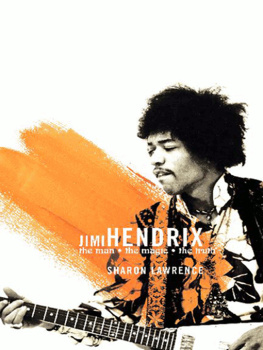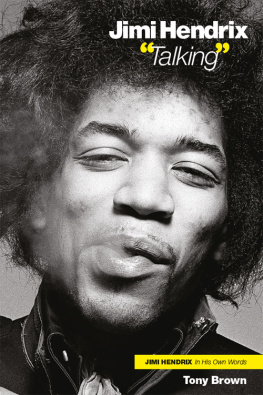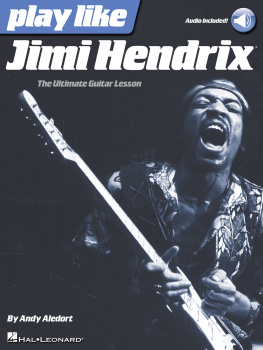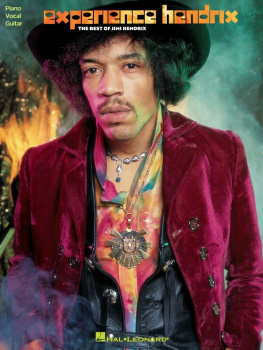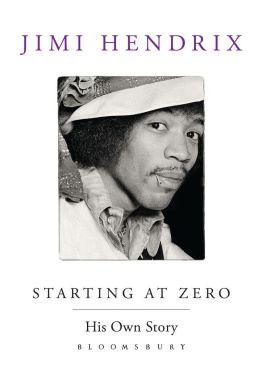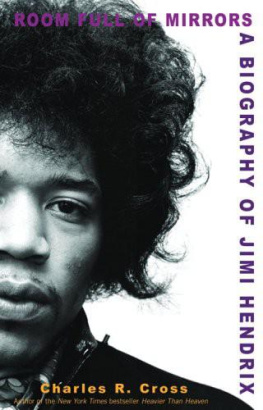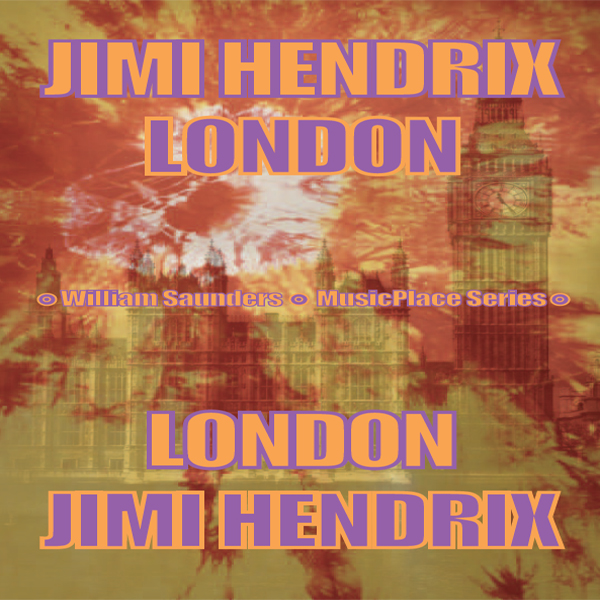
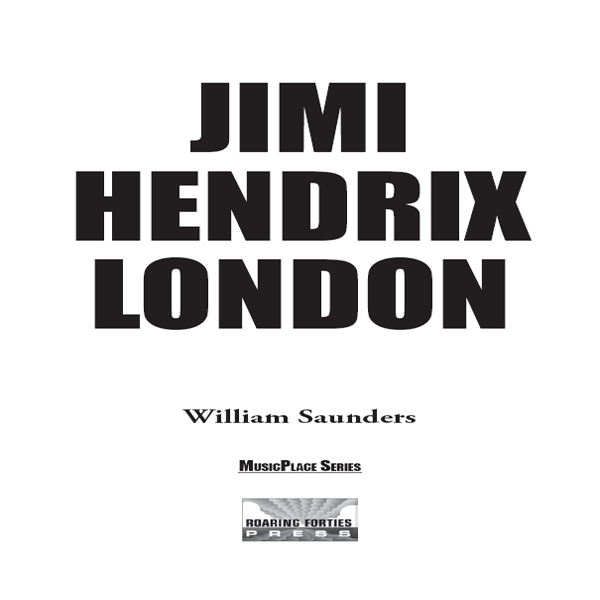
Roaring Forties Press
1053 Santa Fe Avenue
Berkeley, California, 94706
All rights reserved. First published in 2010.
Copyright 2010 William Saunders
Printed in the United States of America
ISBN 978-0-9843165-1-9
Library of Congress Cataloging-in-Publication Data
Saunders, William, 1958
Jimi Hendrix : London / William Saunders.
p. cm. -- (MusicPlace series)
Includes bibliographical references.
ISBN 978-0-9843165-1-9 (pbk. : alk. paper) -- ISBN 978-0-9843165-2-6 (pdf)
-- ISBN 978-0-9843165-3-3 (epub) -- ISBN 978-0-9843165-4-0 (kindle)
1. Hendrix, Jimi--Travel--England--London. 2. Rock musicians--Travel--England--London. 3. London (England)--Description and travel. I. Title.
ML410.H476S28 2010
787.87166092--dc22
[B]
2010031865
acknowledgments
T hanks to Nigel and Deirdre for discovering the book I had always meant to write and for persisting until I did. While all sources are noted, I was grateful for conversations with John Hoppy Hopkins, Valerie Wilmer, and Joan Hills for background information. Thanks to Jon at Redferns for passing on enquiries to photographers from the era.
Thanks to Oisin Little for many long hours of instructive conversation on the art of guitar playing, long ago.
Thanks to Kate, Charlotte, and Felix, who have had the windows rattled by the Experience during the course of my research. And thanks to Jimi Hendrix, who is still remembered with a smile whenever his name comes up in London.

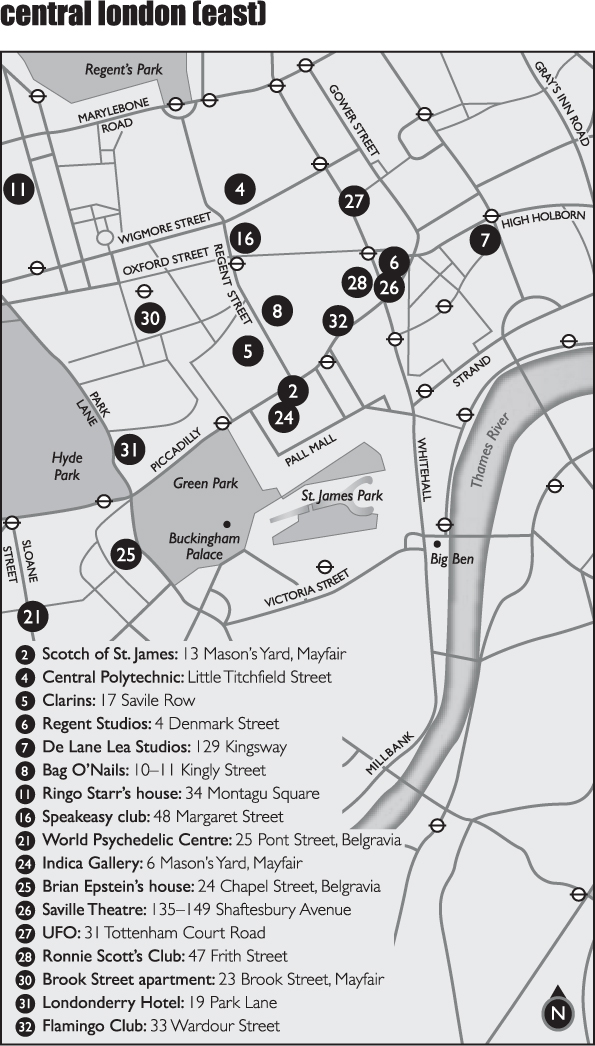
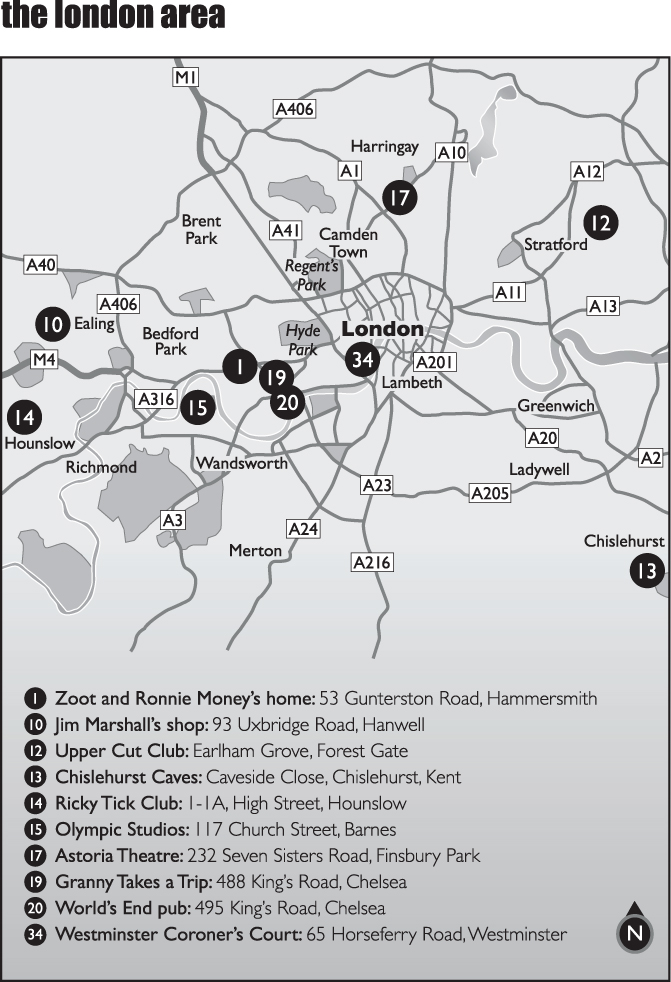
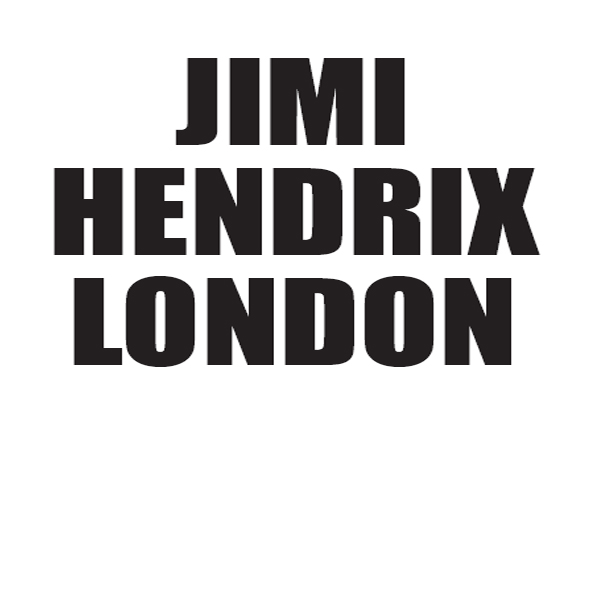
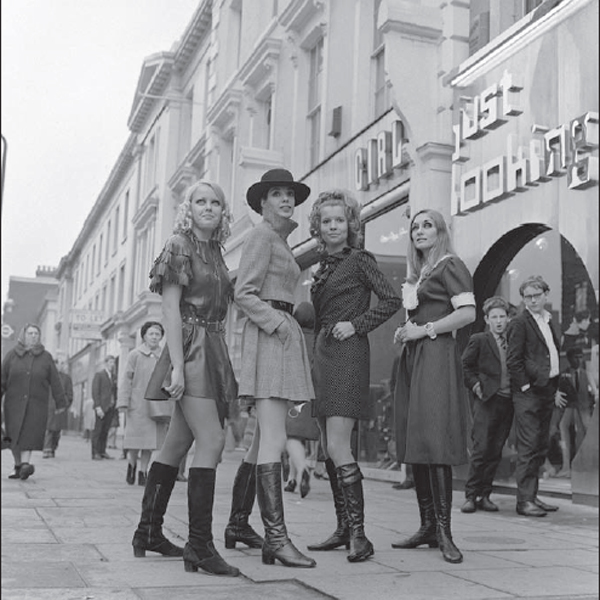
Whether hem lines rose or fell, knee-high leather boots were a fashion essential in Swinging London. Four models pose to advertise the opening of a boutique on Chelseas Kings Road in 1967.
introduction
when london swung
L ike several districts in London, Worlds End takes its name from a pub beside which the buses stop. In 1980 it seemed an apt name for the streets at the ugly end of Chelsea dominated by decrepit Victorian buildings that housed small factories and antique warehouses.
Schoolkids would pass a joint around as we played the Space Invaders machine in the corner shop just down the road from the Worlds End pub. Across the road from the pub itself was a greengrocers run by a tiny man who wore a little peaked cap and a black beard down to his chest and who was always accompanied by a scrawny dog. On rainy days this shop had an awning that came down to protect the fruit and vegetables stacked on the sidewalk. The awning was a dazzling lemon yellow, with a drawing of a witchy womans face painted in pale green and, written beneath her in red lettering, the words Granny Takes a Trip.
The awning, which had once belonged to a trendy boutique of the same name, was a relic of the Summer of Love. It seemed to me like a messenger from a lost world. Thirteen years after it had passed, that summer was both enshrined in legend and the subject of debate. On one side of the debate were those who approved of the many social changes that had come about in the 1960s and questioned whether they had gone far enough. On the other side stood those who had disapproved of them and feared that they would be the cause of imminent social breakdown.
The Worlds End pub stands at the western end of the long Kings Road. Local folklore claims that the road was built by King Charles II over three hundred years ago so he could visit his mistress, the actress Nell Gywnne, in what was then her country home. There is no historical doubt that Nell Gwynne, one of the most popular Londoners who ever lived, persuaded Charles to found the Chelsea Hospital, a convalescent and retirement home for veteran soldiers at the eastern end of Kings Road. The scarlet-coated old veterans are a popular subject of picture postcards.
Elsewhere on the Kings Road are numerous boutiques catering to a younger crowd with a taste for far more extravagant attire. In 1980, at the beginning of the yuppie decade, the style was the frills and bows worn by the Sloane Rangers (who took their name from Sloane Square at the east of Kings Road). It was a look that harked back in some ways to the 1950s, and reflected a general view that the 1960s, for better or worse, were over and done with. It was also a look that aspired to appear aristocratic. The most famous Sloane Ranger was Diana Spencer, who would become Princess of Wales when she married Prince Charles.
Aged twenty in 1980 and on the run from a privileged education, I was drawn to the dismal end of Kings Road where the tattered rags of 1967 still fluttered. Yet thirteen years is not such a long time, and the friends I made around Worlds End whose own youth had coincided with the Summer of Love were barely into middle age. Working-class men, married with young children, the London they recalled was not a utopia of bright young things, and sometimes it sounded as squalid as anything to be found in the novels of Dickens. But they recalled the ease with which work was to be found, the extravagant dandyism, the shock of the arrival of LSD, and above all the music. Among the musicians they recalled was Jimi Hendrix, and they remembered him not as a stadium god but as a club performer: by far the best club performer but one of many of his kind, several of whom were pretty good in their own right.
In the early 1980s, kids like me were discovering Hendrix for the first time. He had been associated with progressive rock and the longand, so it seemed to us, self-indulgentinstrumental solos. But the arrival of George Clintons music with Parliament and Funkadelia caused us to listen to the musician Clinton claimed as his own inspiration. Seeing Jimi as a flesh-and-blood pioneer rather than an idealized historical figure made the thought of those club performances all the more intriguing. What a journey into the unknown they must have been, what a journey into the unknown that whole era was.
Some books about Jimi Hendrix promise The Truth. I do not make such an audacious claim. I do hope that by putting him back into the time and place from which he emerged he will become a little more real, and that the artist that he was will emerge from the distortions of myths.
In 1966 Britishness was cool. At the end of April, Time magazine dedicated an issue to the claim that London was the world city that best embodied the spirit of the decade. Above all, London was the city of the young in the decade when youth set the style. Almost half the population was under thirty years old. And in London the young enjoyed unprecedented prosperity and independence, compared with their parents and grandparents and with many of their contemporaries elsewhere in the British Isles. Cheap rents made independent living easy and attractive. A bed-sitting-room, a furnished room in what had once been a large Victorian or Georgian family house, cost only a few pounds a week. Bed-sit living meant sharing a bathroom with half a dozen other people, and kitchen facilities might be no more than a hot plate on a staircase landing. These conditions were neither Spartan nor unhygienic by the standards of the time. Refrigerators were still a luxury, and thousands of London homes had no indoor bathroom at all. In any case, the young did not rent bed-sits so they could enjoy the comforts of home. The daytime was for working, and the nighttime was for clubs, coffee bars, and parties.





